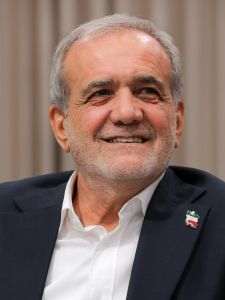The Romanian stock market is still in the "frontier market" category and decisive steps are necessary to increase investor confidence, to attract more investors and to stimulate liquidity. There are lots of things to do, but the priorities and the general direction are clear. Romania can still learn from the experience of other emerging markets and accelerate its evolution.
• General observations: Where is Romania in the general evolution of the world's equity markets?
From our perspective, the financial systems follow a clear lifecycle: as the country's economy grows, in terms of the per capita GDP, so does the size and the complexity of the financial system.
In poor countries, for example, those in a post-conflict situation or the post-communist ones, the financial system is rudimentary. Usually, there is inflation and currency devaluation, and as a result, people keep their savings in assets with an intrinsic value (e.g.: gold, plots of land, houses) and in foreign currencies. Loans and investment are usually difficult and limited to short term periods.
As countries stabilize and grow, banks become the key financial institutions. People tend to keep most of their savings in the form of bank deposits. Banks use the funds to extend credit and make investments. Time horizons for savings and investment become somewhat longer.
Eventually, as a country's economy becomes well-established, capital markets emerge. Savers become investors and become willing to tie up their money for a longer term and take more risk in the hope of an appropriate reward. Typically the emergence of mutual funds and especially pension funds are a critical driver in the growth of capital markets.
It is interesting to see Romania's position in this "market evolution" model.
To do so, we analyze Investable Household Financial Assets, since in the final analysis, households are the ultimate owners of wealth.
The graphs show Investable Household Financial Assets as % of GDP and per capita for several developed and emerging economies vs. GDP per capita for the same countries.
Clearly Romania is in the very early stages of market evolution, in a cluster that includes a few other post-Communist economies, such as Poland (which is more advanced).
A historical perspective also shows Romania evolving in the right direction, but with a lot of upside room to grow.
The historical analysis shows that countries such as US, UK, Canada are very advanced, with investable assets at 2.6 - 2.75 X GDP. This is mostly due to funded pension plans.
Countries such as Germany, Italy, France and Spain are at 1.3-1.8 X GDP. These countries have limited funded pension plans and rely mostly on "social security" -type retirement.
Emerging economies such as Brazil or Poland are characterized by even smaller investable assets/GDP ratios (since they started accumulating pension plan and mutual fund assets much more recently).
Romania's trajectory is similar to that of other emerging markets, but with a very small Household Financial Assets /GDP ratio.
The good news, however, is that Romania has already begun its "market evolution" e.g. by introducing funded pension plans, among other measures. The country is going in the right direction, but slowly.
One possible reason: Romania's financial system remains "bank-centric" as it is dominated by 8-9 large banks, mostly foreign-controlled. Banks typically prefer not to encourage capital markets, since they usually make larger spreads by intermediating deposits and loans, larger than the revenues that can be derived in capital markets.
One possible reason: Romania's financial system remains "bank-centric" as it is dominated by 8-9 large banks, mostly foreign-controlled. Banks typically prefer not to encourage capital markets, since they usually make larger spreads by intermediating deposits and loans , larger than the revenues that can be derived in capital markets.
How could Romania bring about a take-off of capital markets?
The themes proposed by the conference offer an appropriate set of topics:
1. Attracting savings to the capital markets
2. Broadening access to markets
3. Listing state-owned companies
4. Best practices for intermediaries
5. Enhancing market liquidity
• Attracting Savings to the Capital Markets
For the capital markets, the main competitor for savings is bank deposits. As of 2010, based on the central bank flow-of-funds data, Romanian Household Financial Assets were approximately 2/3 in bank deposits and cash vs. 1/3 in equities, mutual funds, life insurance and pension funds.
The competition between capital markets and bank deposits is largely driven by risk perceptions and relative returns.
Romanian equities investors, who had experienced favorable markets in 2005-2006, many for the first time in their life, were badly hurt in the 2008 crash. The bear market memory is still strong. Nevertheless, with interest rates at very low levels, and the new bull market in developed markets, prospects for Romanian equities may well be encouraging.
Apart from market factors, which, by and large, we cannot control, what can be done to attract more savings to the capital markets?
• "Building trust" is essential
Investing in capital markets means tying up your money for a period of time, for an uncertain return and with no guarantees.
To do so, the investor must have trust in the market: the intermediaries ( asset managers, brokers, the exchange), the investment products and the regulators (as the "cops" for the entire process).
Trust in the market takes time to build and can be easily destroyed as a result of cases of insider trading, market manipulation, fraud etc. Romania has had its share of such events (e.g. the Cristian Sima case in 2012).
The only way to build trust in the market is to have a steady regulatory hand and to empower market institutions, mainly the exchange.
Brazil, which has had a remarkable evolution in this regard, since the 1980s, provides excellent lessons in this regard.
In the 1980s and 1990s, Brazil was a "low-trust" market, with many cases of market manipulation, fraud, money laundering, insider trading, defaults etc. Today the Brazilian capital market is at a similar level of reliability and sophistication as any "first world" market. The country has taken constant steps in that direction over many years.
The Brazilian regulator, Commissao de Valores Mobiliarios (CVM), became increasingly professional and powerful. It has instituted measures which are fairly unique: for instance, in Brazil, the exchange clearinghouse (and through it, the regulator) is kept aware of the ultimate beneficiary of any trade. This enables the clearinghouse to detect and prevent attempts of market manipulation.
If they fail to follow the risk management policy of their institution, senior executives in Brazil are held personally liable for losses incurred by their institutions. In several cases, senior executives who were found guilty of fraud or "cooking the books" have gone to jail.
The Brazilian exchanges have adopted extremely conservative risk management policies.
For example, in the Brazilian derivatives markets, over-the -counter transactions have been reported to the clearinghouse since the early 1990s. The Brazilian derivatives exchange BM&F requires traders to deposit margins on a gross rather than net basis.
Around 2000, the Brazilian stock exchange BOVESPA, introduced a revolutionary concept: companies that elected to follow a strong corporate governance code were granted a special "label", becoming part of the so-called Novo Mercado. As a result these companies enjoyed investor trust. This attracted many foreign investors and a decade later, the Novo Mercado stocks had outperformed the BOVESPA index by 60%.
By the way, the Philippine Stock Exchange is currently following in the footsteps of Brazil and developing an "elite listing" category ("Maharlika Board"), similar to the "Novo Mercado".
• A reliable asset management industry and strong distribution is essential
Investors need adequate diversification, professional management and reasonable transaction costs. Asset managers provide these benefits. They must be reliable, responsible and transparent.
Investment products - be they stocks, bonds, mutual funds, pension plans - need distribution. Distribution, in particular retail distribution, requires trustworthy, reliable, appropriately trained financial advisors who can educate the investors and convince them to invest for the long-term.
• Broadening Access to Markets
Broadening access to markets, in our view, is mostly about building retail and attracting foreign investors.
Again, the Brazilian example is important: in the 1980s, Brazil had several tens of thousands retail investors; in 2010, Brazil had some 500,000 direct equity investors and many more investors in mutual funds, pension and insurance products.
A lot of this was driven by the strong performance of the market - a bull market from 2002 to 2010, but the exchange also played a key role. BOVESPA conducted a sustained marketing campaign, which included the creation and support of financial news media, sending "campaign buses" to the interior of Brazil to conduct investment seminars, creating investment clubs and convincing trade unions to invest in the stock market.
Attracting foreign investors is also a major aspect of market broadening. In this regard, Brazil once again offers a great example: for the past dozen years, the Brazilian exchange has maintained a program of outreach and education of foreign investors, called BEST BRAZIL. The program includes a regular road show, held in New York, London, Hong Kong and involving the Brazilian exchange, clearinghouse, depository, the regulators, the central bank and selected companies.
The Philippine Stock Exchange similarly organizes a Philippine Day event in major financial centers around the world.
• Listing State-owned Companies
New issues, in particular related to privatization of state companies, are a proven way to stimulate the stock market.
In the UK in the mid-1980s, the privatization of British Telecom was the driver of "people capitalism" and a wave of interest in stocks. Nothing works as well to create confidence in the stock market than having a generation of investors who took the plunge and made money!
Privatizations of state companies also are a good way to attract foreign investors: these typically like to invest in solid reliable companies in emerging markets, such as electric utilities, telecoms, infrastructure.
• Best Practices for Intermediaries
Intermediaries - broker-dealers, asset managers, banks - are essential links in the value chain of capital markets.
Making sure that intermediaries are professional and trustworthy is a major priority for markets. This is a joint responsibility of the regulators and of the exchange.
The exchange for example can (and already does):
- Define member admission criteria - capital requirements and professional achievement - to ensure that exchange members are reliable players;
- Conduct on-going member surveillance - to detect possible abuses or risk situations;
- Conduct on-going trade surveillance - to detect suspicious trading patterns.
These are routine activities on exchanges.
The exchange must be empowered to enforce its rules and regulations through serious, well-publicized disciplinary measures.
For example, the exchange can and should suspend or expel members who violate exchange rules and accepted policies. The exchange should make it clear that it stands ready to support the legal system in case more severe action is needed.
• Improving market liquidity
Market liquidity depends, first of all, on the number of investors and traders and their diversity of views on the market. Therefore, as the market attracts more participants - retail investors, foreign investors and so on, its liquidity can be expected to increase.
There are a number of mechanisms or practices that can be used to further enhance market liquidity. They typically have to do with stimulating arbitrage trading, introducing market-making and allowing traders to express more varied and extreme views on the market.
In the first category, one might include products such as derivatives and exchange-traded funds (ETFs) which naturally support arbitrage activities such as cash-futures arbitrage, program trading, and ETF creation and redemption.
Many exchanges have market-makers whose job is to provide steady liquidity in derivatives contracts or stocks . Market makers are typically compensated via exchange fee reductions or direct payments form issuers.
In the last category, one might include practices such as securities lending and borrowing, margin lending, short-selling. Such techniques enable traders to use leverage and to express "strong convictions".
Judiciously used, the mechanisms outlined above can be effective in enhancing natural liquidity.



















































